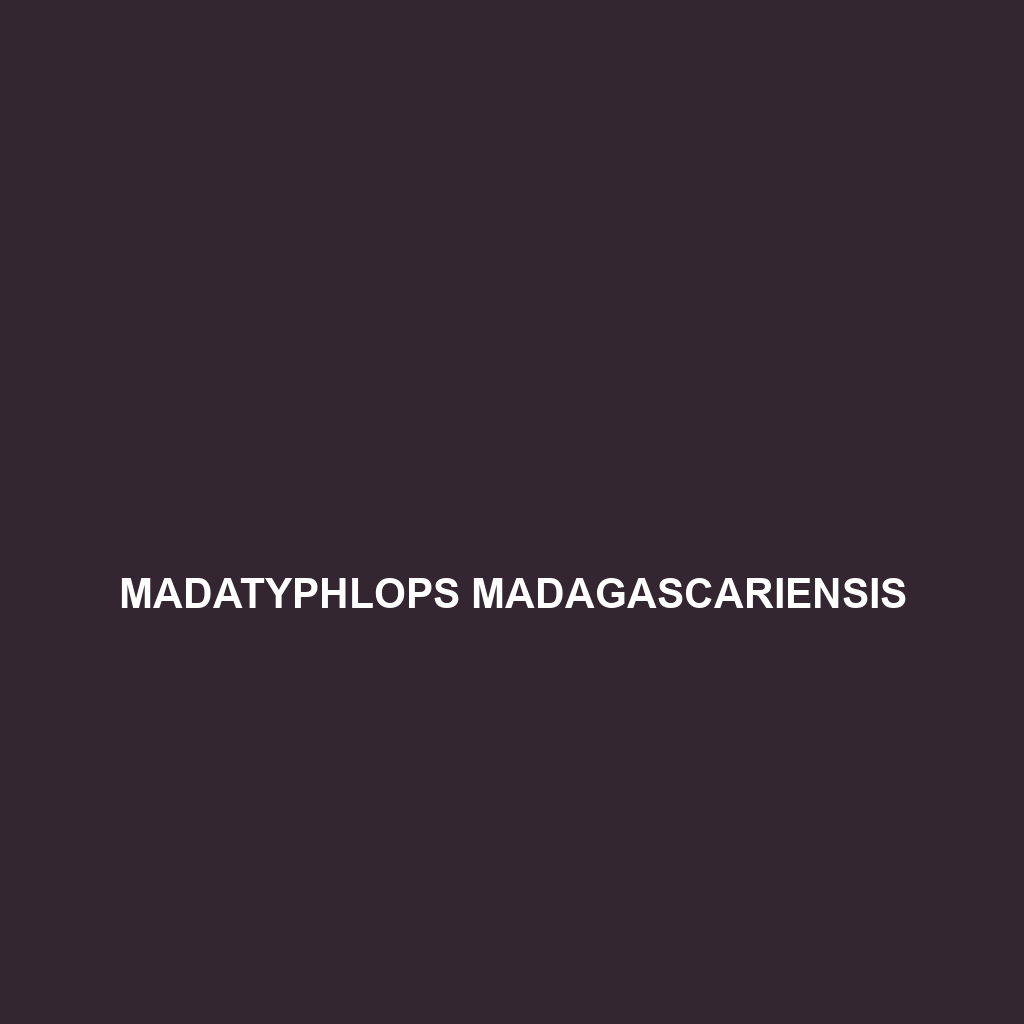Common Name
Madatyphlops madagascariensis
Scientific Name
Madatyphlops madagascariensis
Habitat
Madatyphlops madagascariensis, commonly known as the Madagascar blind snake, is primarily found in the rich and diverse ecosystems of Madagascar. This unique species thrives in various habitats, including rainforests and savannas, where humidity and temperature fluctuates significantly. The warm, tropical climate of Madagascar provides an ideal environment for these snakes, as they prefer the moisture found in leaf litter and burrows. Additionally, they may be located in disturbed areas and agricultural lands where their primary food sources can be found abundantly. These habitats are critical for their survival, offering not just food but also protection from predators.
Physical Characteristics
The Madagascar blind snake displays several interesting physical characteristics. Typically, these snakes can grow up to 40 cm in length, although some individuals may reach sizes of up to 60 cm. Their elongated, cylindrical body shape allows them to burrow effectively through loose soil and leaf litter. They possess smooth, shiny scales that can vary in color from dark brown to reddish-brown, often with lighter-colored bands or stripes that provide some level of camouflage against the earthy surroundings. One of the notable features of Madatyphlops madagascariensis is their vestigial eyes, which are covered by scales and indicate their adaptation to a life spent largely underground.
Behavior
Madatyphlops madagascariensis exhibits several notable behaviors typical of fossorial (burrowing) species. These snakes are primarily nocturnal, coming out at night to hunt and mate. Their underground lifestyle means they spend much of their time burrowing and searching for prey, which consists mainly of small invertebrates such as ants and termite larvae. They are solitary creatures but may congregate during the mating season, engaging in various courtship displays. Their ability to sense vibrations in the ground is essential for navigation and foraging, allowing them to detect potential threats or prey even in the dark.
Diet
The diet of Madatyphlops madagascariensis is primarily carnivorous, making it an insectivore. They mainly feed on small invertebrates, relying heavily on termites and ants, which they locate through smell and touch. Due to their secretive nature, their feeding habits can often go unnoticed. They have a peculiar feeding pattern, allowing them to consume prey whole, thanks to their flexible jaws. This specialization in feeding not only reflects their adaptation to their habitat but also highlights their role in controlling insect populations.
Reproduction
The reproductive cycle of Madatyphlops madagascariensis is largely influenced by environmental factors. Mating typically occurs during the warmer months when conditions are more favorable for breeding. The gestation period lasts approximately 6 to 8 weeks, after which females give birth to live young, a characteristic known as ovoviviparity. The young snakes, measuring around 15 cm at birth, are independent from the moment they are born and do not require parental care. This reproductive strategy allows them to quickly increase their population in favorable conditions, although the survival rate of young snakes can be affected by predation and habitat loss.
Conservation Status
According to the IUCN Red List, Madatyphlops madagascariensis is currently classified as vulnerable. The main threats to their survival stem from habitat destruction due to deforestation, agricultural expansion, and human encroachment. Conservation efforts are essential to maintain their populations, focusing on habitat preservation and restoration. Organizations working in Madagascar are striving to raise awareness about the ecological importance of this species and implement sustainable practices that protect their natural environment.
Interesting Facts
One of the captivating aspects of Madatyphlops madagascariensis is its incredible adaptability to its environment. Despite their inability to see, these snakes have developed other enhanced sensory capabilities, including an acute sense of smell and touch, which aid in hunting and navigation. Additionally, they possess a unique defense mechanism; when threatened, they can burrow into the ground rapidly, making it difficult for predators to capture them.
Role in Ecosystem
Madatyphlops madagascariensis plays a vital role in its ecosystem as a natural predator of insects. By controlling ant and termite populations, they help maintain the balance within their habitat, which is particularly important in ecosystems where these insects are prevalent. Their presence is an indication of a healthy, functioning ecosystem, and any decline in their population may signal broader environmental issues. Protecting this species is critical not only for biodiversity but also for the health of the habitats they occupy.
